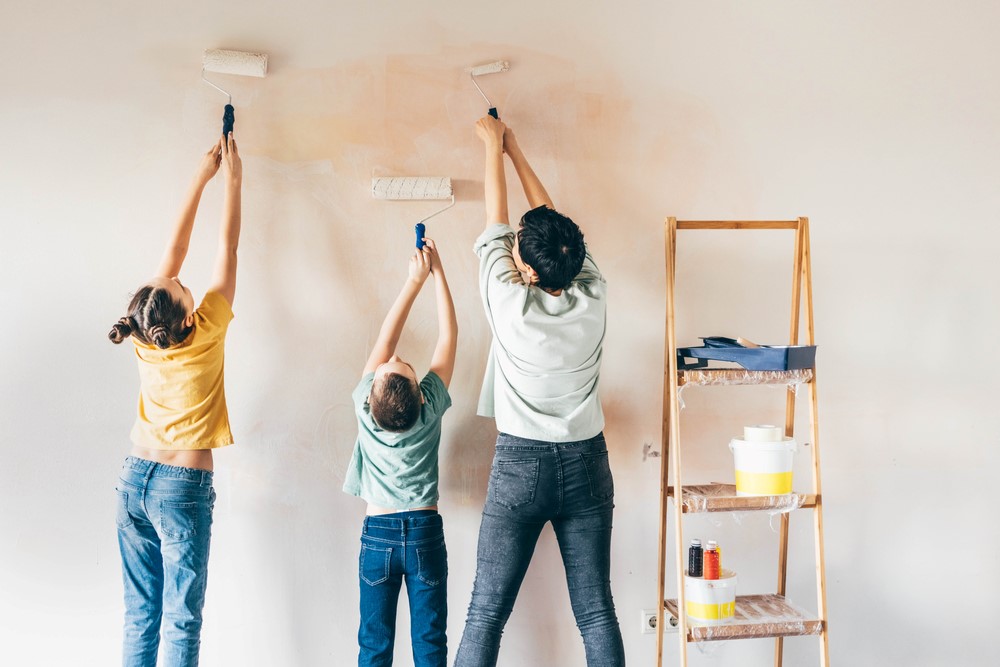Wish you could start from scratch and remodel your entire home? Or maybe you just recently moved into a new home and want to personalize it to suit your tastes and lifestyle? If you are feeling overwhelmed by how much work your home needs or the upgrades you want to make, remember to take it one step at a time. Unless you plan on dropping lots of cash upfront for an entire rehaul of every room, start with just one.
The real question is: which room? Not sure where to start? Here are some pointers and expert advice on how to choose which room to remodel first. Whether you’re replacing antique hardware throughout your period-style home or knocking down entire walls, take these tips into consideration before you begin. That way, your remodeling aspirations won’t be overwhelming.
Consider the Whole Home
Before you nail down a room to remodel first, consider your entire home’s needs. What does it truly need to make you feel “at home”? Chances are, you have a lot of ideas, visions and maybe even inspirational Pinterest boards. Take a look at these ideas, take a giant step back and begin to prioritize. Make a list of what needs to be done, room by room, whether it’s simply swapping out your kitchen’s cabinet knobs and pulls or installing new hardwood floors across the entire living space.
Create a Budget (but Be Somewhat Flexible)
Evaluate your finances and find out what you can afford. Maybe you can’t put out money for those polished marble tile floors in the ensuite bathroom, but you can afford some new lighting fixtures or faucets.
Creating a budget for a remodel is especially important if you just recently purchased the home. Putting down a deposit on a home and paying for a realtor, paperwork and even the inspector can be financially straining, so it’s essential to build back that nest egg for a real emergency, too. Otherwise, you can end up, as the expression goes, “house poor,” meaning all your income is spent on homeownership.
Decide what you can tackle financially speaking and get a few estimates from contractors to see what can be done. An honest contractor might even provide tips and suggestions on how you can cut or even shave costs. In the meantime, you can save up for what seems reasonable.
Think Efficiency and Functionality

Before you even begin to consider incorporating more visually appealing features of the home, focus on what is important — namely, each space’s overall efficiency and functionality. If you can’t use the kitchen because certain appliances are not working correctly, that’s a significant issue that needs to be addressed first and foremost.
Another example might be fixing a ceiling leak or replacing appliances and fixtures with Energy Star-rated appliances that can make your home more energy-efficient. While you might want to dive right into the “wants” of the home, make sure to address the “needs” first. Remember to always place function over form. Style can always come later.
Efficiency and functionality also come down to your home investment. Consider what will increase the value of your home from the start. You never know what kind of life changes — a baby, new job, etc. — might have you move sooner than you expected. Locking in these additions and fixes will make your home value increase and easier to sell should you ever need to.
Prioritize the Most Frequently Used Spaces
Evaluate which rooms in your home are used the most. Common areas like the kitchen, living room and dining room are all areas where the family gathers the most. So while it may be tempting to remodel the master bedroom and ensuite bathroom for you and your spouse, prioritizing these frequently used spaces are more mutually beneficial.
If pleasing an entire family isn’t part of the equation, consider what areas are most important to you. For example, do you tend to get frustrated in the kitchen and would rather order takeout than spend time in it cooking? Consider ways to improve it so it feels more inviting by opening up the counter space, adding a breakfast bar or investing in updated appliances. The same goes for the living areas. For example, if you find yourself heading to other areas of the home because the living room is dark, it might pay off to knock out a part of the wall to create more windows for natural lighting.
Prioritizing the spaces you most frequent and remodeling them first doesn’t mean you can’t come around to other spaces later. In fact, these spaces might already be second in line with more important structural alterations that help with the efficiency and functionality of the overall residence. But by remodeling these areas, you can begin to make a house feel more like home.
Tackle Smaller Remodel Upgrades Between Major Projects

If you lack the funds to remodel one room after the next, you can still feel a sense of accomplishment. How? By tackling smaller projects and home upgrades in between. While waiting to leap into your next major Reno project, check off the more minor stuff that needs to be done.
For example, you could install more decorative elements like lighting or add storage solutions to your closets or kitchen cabinets. You could even focus on the exterior spaces, like the patio or front porch. But, ultimately, consider making a few simple changes and upgrades that don’t require tons of cash or hard labor from you or a crew of contractors.
Create a Comfortable Home
When it comes to creating a comfortable home that you love, patience is key. It doesn’t come overnight. So, take your remodeling efforts in baby steps and try not to become house poor. With proper planning and a budget, you can make your home special without breaking the bank within a single year. Choose what room you want to remodel first, accomplish what you set out to do and go from there.

